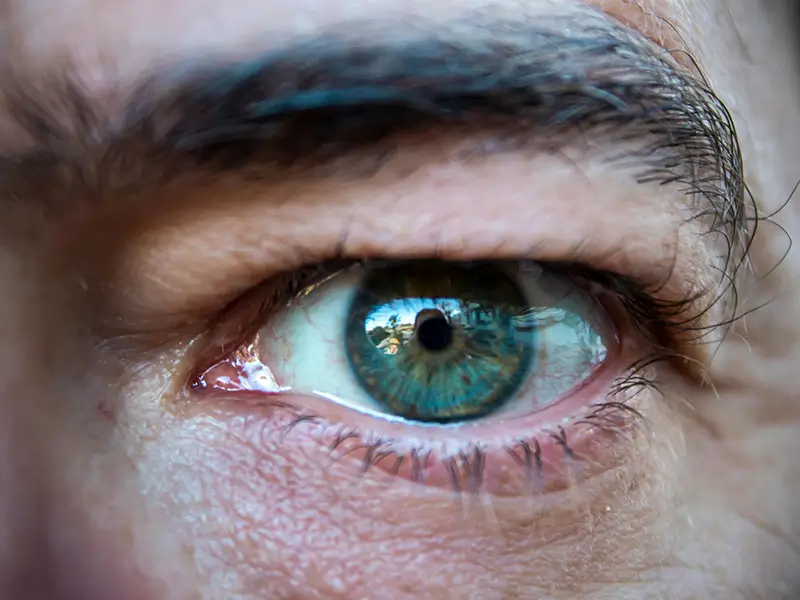Why You Keep Seeing Your Shirt Everywhere: The Brain’s Hidden Filters
Let’s say you buy a new shirt. You like it. It feels fresh, maybe even a little unique.
But then something weird happens.
You step out and notice three other people wearing the same style. You open your phone, and someone’s wearing it in a reel. You turn on the TV, and the host has on something almost identical.
Now it feels like the shirt is following you. But here’s the thing: it was always out there. You just didn’t notice it—until now.
This strange experience isn’t a coincidence, and it’s not a fashion conspiracy. It’s actually your brain working exactly the way it was designed to.
Psychologists call it the frequency illusion, and it has a lot to do with how your brain filters the world. Let’s break it down.
What Is the Frequency Illusion?
The frequency illusion happens when something new suddenly starts showing up everywhere—at least, that’s how it feels.
In reality, it’s not showing up more often. You’re just noticing it more than before.
The term “Baader-Meinhof phenomenon” is often used for this. It was first mentioned in the 1990s by a reader of the St. Paul Pioneer Press. They had just learned about a German extremist group and saw the name again the very next day. It felt like more than a coincidence.
Later, linguist Arnold Zwicky gave the experience a more formal name: the frequency illusion. According to Zwicky, this illusion is made up of two steps:
- Selective attention: Once something becomes important to you, your brain starts picking it out from the noise.
- Confirmation bias: The more you see it, the more you start believing it’s suddenly everywhere, even if it’s not.
As Psychology Today explains, “When we learn a new word, or buy a new car, and then come across it multiple times in short succession, the frequency illusion is at work.” This is your brain at full efficiency mode—filtering the world based on what you’ve recently tagged as relevant.
How the Brain Filters Reality
So, what decides what gets filtered in? That job belongs to a part of your brain called the Reticular Activating System, or RAS for short.
It sits in your brainstem and acts like a gatekeeper. Every second, your senses pick up millions of pieces of information. The RAS chooses which parts are allowed into your conscious mind.
Think of it like a security guard standing outside a nightclub. Only the most important signals get in. And what counts as important depends on your current goals, thoughts, and focus.
Here’s an example. Let’s say you’re waiting for a phone call. You’ll notice your ringtone immediately, even in a noisy room. That’s your RAS in action—prioritizing what matters to you in that moment.
Now apply that to the shirt you just bought. Because you recently spent time thinking about it, buying it, and wearing it, your RAS now considers shirts like that to be “important.” So it brings them into your awareness wherever they show up.
Neuroscientist David Eagleman sums this up well:
Our brains are constantly making decisions about what to pay attention to and what to ignore. Much of what we call ‘reality’ is just what the brain allows through.
Your Attention Works Like a Flashlight
This process also ties into something called selective attention. It’s the idea that your focus is like a flashlight in a dark room. Whatever the light lands on becomes visible. Everything else fades into the background.
The world doesn’t change. Your focus does.
And that creates a kind of everyday blindness. You might walk past the same object ten times and not notice it. But the moment it becomes relevant—maybe you’re told to look for it—it jumps out instantly.
Professor Anil Seth, a leading neuroscientist, puts it like this:
We don’t just passively perceive the world. We actively construct it.
In other words, you’re not just receiving reality. You’re editing it in real-time.
Why This Happens and Why It Matters
Our brains filter out most information to keep us from getting overwhelmed. That’s a good thing. Without it, daily life would feel like trying to drink from a firehose.
But these shortcuts come with side effects.
- A doctor might over-diagnose a disease they just studied.
- A marketer might show you the same product ad repeatedly, so it feels familiar.
- You might overlook important opportunities simply because your brain didn’t think they were relevant at the time.
Once you understand this, you’ll see it everywhere. Your brain is helping you survive—but it also hides things from you without asking.
Can You Change What You Notice?
Yes. While you can’t turn off these filters, you can shape them.
Here are three tools that help you do that:
- Goal setting
Write down what you want to focus on today. Even a simple list tells your brain what to prioritize. - Journaling
Reflecting on your day helps you spot patterns and moments your brain might have ignored in the moment. - Mindfulness or meditation
These practices train your attention, making it easier to notice what’s actually happening instead of what your brain thinks should matter.
Over time, these habits can reprogram your RAS to look for things that align with your goals, not just your habits.
Conclusion
If you’re seeing your shirt everywhere, it’s not because it suddenly became popular. It’s because you just started noticing.
Your brain is doing what it does best: filtering the world based on what matters to you in this moment. That can be a gift—or a blindfold—depending on how aware you are.
The key is knowing it’s happening.
When you realize how often your brain edits reality, you can start taking some control back. You can decide what to shine your flashlight on.
And maybe, just maybe, that means seeing more of what truly matters.
Sources
- Zwicky, Arnold (2005). Frequency Illusion – Stanford University
- Psychology Today: “The Frequency Illusion” — https://www.psychologytoday.com/us/blog/words-matter/201701/the-frequency-illusion
- Eagleman, David. The Brain: The Story of You (2015)
- Seth, Anil. Being You: A New Science of Consciousness (2021)
- Wikipedia – “Baader-Meinhof Phenomenon” (1994 anecdote origin)
If this article made you think—bookmark Wiz Fact.
We’re just getting started.
Smart, rebellious ideas are what we do here. Soon, we’ll launch our newsletter too—so these insights can fly straight to your inbox. No fluff. Just facts worth knowing.








